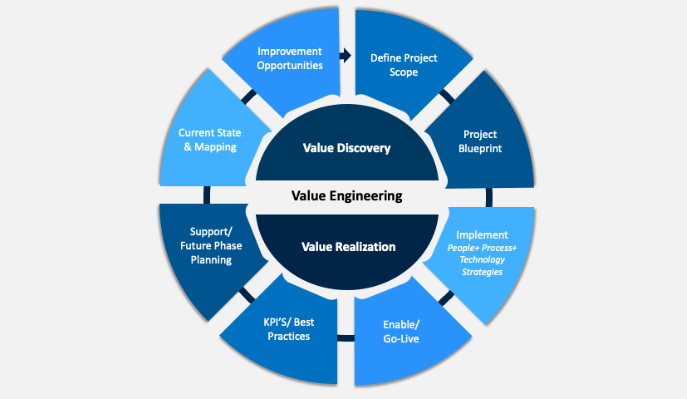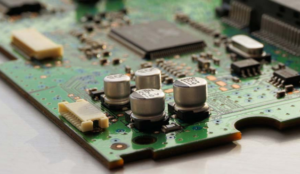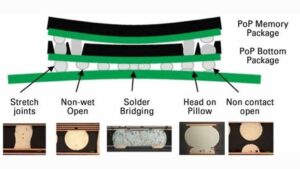Value Engineering: What is it?
A Value Analysis and Value Engineering VA/VE methodology guarantees to uncover potential for long-term cost reduction for you across the product lifetime while maintaining or even increasing value for your consumers.
And here’s a handy definition of what’s involved:
“Value engineering is a methodical, planned strategy for delivering essential project functionalities at the lowest cost. Value engineering encourages the use of less expensive substitutes for materials and techniques without compromising functionality. It is only concerned with the functions of different parts and materials, not with their physical characteristics.”
Where does VA/VE all start?
You have a Product that has traditionally been crucial to your company’s success but whose profitability and/or market share are declining could be the culprit.
Are the costs of your components, raw materials, and/or assembly soaring?
Are they causing your present working conditions to become less competitive?
Does component obsolescence pose a threat to the future of your product?
Is your customer complaining about the product’s performance in comparison to competitors or the price?
How do you restore the proper balance between cost, customer value, performance, and price to make your product profitable once more?
Value engineering might be useful in the above situation.
But how can you correctly achieve VA/VE?
Despite being a powerful tool for manufacturers, VA/VE is challenging to master. To get your teams working together to deliver the goods, you need a combination of analytical abilities, multi-team collaboration, product expertise, creativity, and good old-fashioned discipline.
Without a structured and disciplined process, you run the risk of just going with your gut, placing unnecessary constraints on your thinking, and ultimately failing to convert your insight into sound and workable strategies.
“A proper examination of the project, product, or system under study’s functions is necessary for value engineering. The result improves performance and quality while resolving issues and lowering life-cycle costs. A process is not truly a value engineering study if it does not incorporate the function analysis, recommendations and solutions from the research, or improvements to quality and performance.”
VA/VE Methodology:
To truly benefit over the long run with a Value Engineering plan, you must adhere to its systematic methodology. What constitutes a successful VA/VE process, and what steps make it up?
- Information Acquisition: Analyze costs and functional requirements.
- Thinking Creatively: Identify concepts and potential remedies.
- Evaluate: Examine concepts for future development.
- Develop: Analyze the ideas you’ve picked in depth.
- Present: Share concepts with stakeholders.
- Implement: Put the chosen strategy into action.
Steps in the VA/VE process
To determine how you can cut costs without sacrificing the features and quality that are the core drivers of your sales, VA/VE first determines the genuine worth of your product for your customers. The next step is to define, cost, propose, and implement these ideas in the most effective and useful manner that can be.
You must establish and follow a plan for your procedure based on these six conventional steps. It will help you stay focused on your project’s goals and outline exactly what steps to do next.
1: Information Acquisition
The VE process begins by looking at every stage of the lifespan of your product to identify its cost components. This entails all the money you currently spend on the product’s distribution, maintenance, and manufacturing.
Start by classifying costs into categories such as Bills of Material and Process charges. Costs associated with the process range from shipping logistics to the build and test of the manufacturing. Everything is up for discussion in VA/VE, from the way you procure resources to the way you ship your goods. This makes it possible to find and take advantage of any chances for smart cost savings that may exist.
Identify the different elements that make up your entire product cost or COG’s (Cost of Goods). Calculate the percentage that each cost element contributes to your COGs by giving it a monetary value (based on data in your systems).
As an OEM, your Analysis might include below Items
- Packing material
- Consumables
- CoTS Items
- Outbound Logistics
- Inbound Logistics
- Intercompany logistics
- Rework, Scrap and waste
- QA & Test Labour
- Sub contract Processes and labour
- PCBA Build Labour
- Box Build Labour
- Cable assembly Labour
- Bare PCB’s
- Active PCB components
- Passive PCB components
- Cable Assembly Parts
- Moulded Plastic Parts
- CNC machined metalwork parts
- Sheet metalwork and fabricated parts
Several realities will become clear once you’ve examined the costs associated with your product. The location of your main cost centres and the primary objective of your value engineering project will be obvious.
For example, if sheet metal components and cable assemblies are the key cost factors for the product then This suggests that to gain new efficiencies and lower the labor content involved, the VE process should include electrical engineering and Mechanical production engineering.
2: Thinking creatively
The VE teams should hold several workshops to generate innovative concepts and fresh methods for creating and delivering the product. Many of your current procedures and materials may be antiquated, ineffective, and quickly lose their usefulness because it may have been so long since a product was last analysed.
You should investigate the “functions” of each of the product’s identified cost aspects with a cross-discipline team. Instead of focusing on “how it works right now,” function analysis should be used to think clearly about what each of these aspects or components performs for a client (the value it offers to them).
If its value to your customers can be maintained or increased in the process, the team is free to radically reimagine how the product is made or even how it functions.
The following types of changes may be suggested by a VE process:
• Modifying the components and raw materials you utilise (make substitutions for more effective, efficient, and value-adding products) Removing redundant features that are not used or valued by customers
- combining already-existing functions and components to improve efficiency
- enhancing build procedures (from changing the order of assembly to outsourcing where appropriate)
3: Evaluation
The benefits and drawbacks of each concept you have examined are listed in the evaluation step. When the drawbacks outweigh the benefits, the option should be abandoned in favour of other, stronger ones. The team often groups and ranks possibilities using a weighted matrix analysis, and the best alternatives are chosen for consideration in the development phase.
4: Development
The benefits and drawbacks of each concept you have examined are listed in the evaluation step. When the drawbacks outweigh the benefits, the option should be abandoned in favour of other, stronger ones. The team often groups and ranks possibilities using a weighted matrix analysis, and the best alternatives are chosen for consideration in the development phase.
4: Development
Here, we should delve deeper into the ideas that emerged from the workshops as the top contenders. The following steps are involved in this process phase:
- advancing the concepts you choose
- Estimates, sketches, and descriptions
- Calculations of ROI
- preparation of a project plan
Making sure you are developing a strong argument around the potential for savings is crucial. Make sure your savings figures are accurate and that your re-design ideas are sound.
How long, for instance, will it take for your ideas’ non-recurring engineering expenses to be recovered? For example It might not be a wise business decision to spend £10K to save £1K per year for the remaining five years of a product’s life cycle.
5: Presentation
Your VE lead must now submit your proposals for approval to the board.
- Prepare your report and presentation for the board.
- Ideas should offer multiple possibilities.
- They must be supported by relevant data.
- Including project schedules
The board should now have all the information necessary to adopt your suggestions. They might want to provide further ideas or modify existing ones, but once this has been done, you should be able to implement the modifications.
6: Implementation
Implement the project plan.
- team members back together
- Project approval or rejection decision
- Examine and assign tasks
- implement the project plan
VE has already been put into practice. New materials will be sourced and used, and processes will alter.
To make sure the VE improvements are having the desired impact, the VE team leader must monitor and track their development. To demonstrate ROI and the effectiveness of your process, you must consider the effects of a project’s implementation on expenses, revenue, and profit margins.
The VE opportunities, after all, are remarkable, but they won’t materialize unless the organization can maintain its enthusiasm and dedication over time. You could require assistance in defining and carrying out your VE goals, working practices, and objectives until the process can become a natural part of how you conduct business.
How to Make Your Next VA/VE Initiative Better?
Value Analysis and Value Engineering (VA/VE) is a problem-solving methodology that employs two efficient procedures for maximizing the value of a good or service. Their application stage in the process of the product life cycle is what sets them apart.
Before any large monetary investments (such as costs for tooling, plant, or equipment) are made in a launch or offering, value engineering is carried out.
Value Analysis, which comes after product development on already-available goods or services.
Both Value Analysis and Value Engineering strategies have the same goal in mind: to raise the value which is proportion of the cost to function. Therefore, increasing value requires a mix of cost-cutting and functional development.
Significant advantages of VA/VE include cost savings, not only in product development but across the board; raising revenues and profits; enhancing product features, and raising customer value.
During a VA/VE campaign, every organization encounters distinctive success and opposition. Below are some of the important strategies that will help your next VA/VE endeavor succeed.
1. Distinguish features from functions

Each product or service has a minimum of one function. The primary purpose of your product is what it does, and it is the most fundamental reason for it to exist. On the other hand, product characteristics can be thought of as the method by which the function is carried out or as the way the consumer interacts with the product. While features might help your product stand out from rival products that perform the same job, they can also have a detrimental impact on cost.
You must be able to distinguish between the functions and features of your product to succeed with your VA/VE process. Given that value is determined by function-to-cost ratio, your product’s functions must be well defined.
Don’t let a function that is also a feature fool your VA/VE procedure. This could result in missed cost-saving opportunities due to incorrectly detected features. On the cost side of the ratio, features need to be addressed and should not be confused with functions.
2. Choose an Outstanding VA/VE Leader

The team’s leader must assist the group in formulating a clear problem description to find workable solutions. Your leader must have previous expertise in planning, organizing, and research. They should set clear and consistent boundaries while guiding the VA/VE team via critical and objective thinking.
3. Obtain Multi-disciplinary Support

A cross-organizational commitment and participation are essential for a successful Value Analysis and Value Engineering VA/VE strategy. Additionally, it requires active business involvement and funding. To comprehend the life cycle costs related to performance, dependability, availability, quality, and safety, a cross-functional team must be created.
4. Produce Numerous Ideas

The more creative ideas produced, the better. Use as many ideas as you can to increase your chances of success!
It is important to foster an environment that values productive, unrestricted expression, and insightful inquiries and lacks any form of condemnation or censure. Assemble a group representing virtually all company functional areas for this aspect of Value Analysis and Value Engineering VA/VE and provide them with the goals and ground rules well in advance of any meetings.
5. Execute!

The Value Analysis and Value Engineering VA/VE process may be completed in its entirety at this point, but it would be useless without carrying out the appropriate change processes to implement the improvement ideas. That shouldn’t require any significant insight.
VA/VE is a commitment to the end—through the implementation and establishment of the improvement ideas chosen. Before you even start your next VA/VE endeavour, ascertain the dedication, and resolve of your organization.
Successful VA/VE campaigns need direction, backing, creative ideas, and effective implementation. In the end, the team’s patience and tenacity are essential to its success.
EMSxchange Enables you to select a Printed Circuit Board assembly, cable & wire harness assembly and box build suppliers meeting your Required PCBA Manufacturing Capability, capacity and Certification Criteria from a global PCB Assembly manufacturer base.
EMSXchange takes complete responsibility and ownership for your electronic manufacturing process and all its deliverables from contract manufacturing supplier selection to manufacturing to quality inspection to shipment and delivery to your door. EMSxchange Electronic Manufacturing Partners Profile includes:
Argus Sytems (AESPL) – PCBA, Cable Assembly, Box Build.
Cerra Systems inc – PCB Manufacturing.




